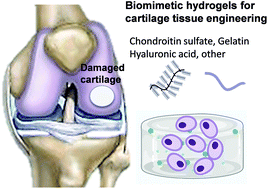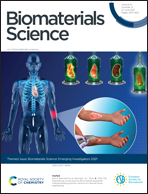Biomimetic hydrogels designed for cartilage tissue engineering
Abstract
Cartilage regeneration and repair remain a clinical challenge due to the limited capability of cartilage to self-regenerate. Worldwide, the costs associated with cartilage regeneration per patient are estimated on average £30 000 for producing and supplying cells. Regenerative approaches may include the use of cell therapies and tissue engineering by combining relevant cells, scaffolds and instructive biomolecules to stimulate or modulate cartilage repair. Hydrogels have been of great interest within these fields to be used as 3D substrates to cultivate and grow cartilage cells. Currently, biomimetic hydrogels with adequate biological and physicochemical properties, such as mechanical properties, capable of supporting load-bearing capability, are yet to succeed. In this review, biomaterials’ advantages and disadvantages for the manufacturing of biomimetic hydrogels for cartilage regeneration are presented. Different studies on the formulation of cartilage-like hydrogels based on materials such as gelatin, chondroitin sulfate, hyaluronic acid and polyethylene glycol are summarised and contrasted in terms of their mechanical properties (e.g. elastic modulus) and ability to enhance cell function such as cell viability and GAG content. Current limitations and challenges of biomimetic hydrogels for cartilage regeneration are also presented.

- This article is part of the themed collections: Biomaterials Science Emerging Investigators 2021 and Biomaterials Science Most Popular 2021


 Please wait while we load your content...
Please wait while we load your content...